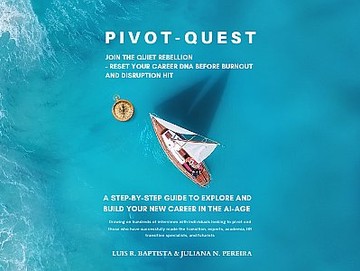By Lee Constantine, Head of Growth at Publishizer
Do you dream of getting published?
Being a traditionally published author has it’s perks. Credibility, speaking opportunities and paid advances are just the start. If you’ve ever wanted to influence minds and create lasting impact with your words then this a compelling path.
The book publishing industry is a giant beast, seemingly unmovable. It is changing, but it will take more than a village and heaps of time. Getting your book idea into the hands of more readers is still about leveraging an author platform, which also takes time and skill to build. And of course high quality writing.
So what does publishing truly hold for authors in 2017 and what can they do to give themselves the best chances of having success?
Access to readers will remain limited.
With traditional publishers becoming even more elusive than before and Amazon continuing to game the system, authors truly are left with fewer and fewer options. It’s no wonder that self-publishing has become such a big deal. It’s a way for authors to break tradition and put more buying power, and money, into their pockets. The results so far, however, have been little more than underwhelming.
Amazon has stacked the odds in their favor, and then they take a fee. And the only incentive they have to change their model is whatever increases their take of authors book sales. Publishing a book is difficult for the average author to accomplish, so anything Amazon provides seems like a good deal. Their fee (avg. 30–35%) is still less than traditional publishers (50%+). Even if it provides little long term benefit to the increasing number of authors who sell books on the site each month.
Wattpad, a now-established startup with a lot of eyes on them, may get your novel read but it’s not a place to grow your platform. No one buys your book so there’s no serious loyalty to you or your writing. And you don’t get their information (email address), which is one of the biggest criteria — other than the proposal — publishers look for when deciding to offer a publishing deal. How valuable is a reader that you cannot actively engage with and get feedback from?
One brilliant business professional and author wants to share her message with as many people as possible. Her end goal is bring money back to the business, her personal brand, and not necessarily to make money on the book. So why not make it free and accessible to as many people as possible? There is some logic in that. And Wattpad and Amazon cater to this strategy. Problems arise when 1) the types of readers who buy free books usually will not pay for your business services, 2) free books hold little to no credibility for the author and 3) free books are perceived as low quality — especially when KDP (Kindle Direct) released data on their readers that told us less than half of them read more than 10% of the book.
The two biggest distributors of books are Amazon and traditional publishers. Both have the ability to land your book on shelves — virtual and brick and mortar. Both take part in setting book prices. Therefore, both control access to readers across vertical layers in the supply chain. Authors are forced to abide by their terms and the evolving behavior of readers who purchase books from them. What I mean is that if Amazon is going to be known for indie authors who push low priced books ($0-$11) then the readers who buy from them are going be triggered by price and not quality. And if publishers are going to be known for major authors who push only medium-high priced books ($12-$35) then the readers who buy from them are going to be triggered by quality AND price.
How do authors earn a living when the dominant marketplace(s) controlling access to most of the world’s readers has the power to limit your readership if you refuse to concede to their terms?
Amazon controls close to 70% of the global ebook market, and are leading authors over a cliff. Amazon is encouraging its customers to read books via subscription where list price is irrelevant and it can pay the author less. All while traditional publishers refuse to lower price of their ebooks and further distinguish themselves on price. What is good for readers is not necessarily good for authors. When authors push their books out to the world on these terms— most notably in how they price the book — then readers are the ones who suffer.
Readers will continue to judge quality.

A book cover has always been one of the most consistent indicators of quality and readers agree. (Major publishers invest thousands in a high quality book cover). A low quality book cover shouts bad reading experience, and vice versa. But that’s not the only way to judge quality. Reviews are strongly correlated to the quality of the book. But are reviews still dependable?
Reviews are still a thing but also at risk of becoming lower value every day. The same way the number of Likes on Facebook was once glorified (and then one day it wasn’t anymore), it begs the question ‘What does a review really mean about a book these days?’ And how many are real? In terms of quality of book, quantity of reviews says a lot. The top 4 or 5 reviews get most of the reads, and usually from close friends who may not have actually read the book. Same goes for reviews planted on the back cover, which usually bear a lot of weight in terms of who gave the review rather than what they had to say about it.
So, on Amazon, the number of reviews does say a lot about the quality of the book. If an author obtains 100+ reviews, then they’ve hustled their way to a good standing and believe in their book enough to share it. They also have somewhat of a platform willing to either buy their book or do them a favor with a solid review. Again, this is correlation, not causation. There are great marketers with a bad product, and vice versa.
What will set authors apart from all the rest in this area will be their ability to obtain feedback pre-book launch.
And then, turn that feedback into valuable, dependable reviews that spread your book like wildfire. Get real feedback from actual readers and supporters. If you’re going to stack the odds back in your favor with Amazon, do it with an arsenal of early adopter readers.
Stu Krieger, author of That One Cigarette (and screenwriter of the classic animated film, The Land Before Time), negotiated a traditional publishing deal with Harvard Square Editions with a beautifully written manuscript and hoard of 300+ early adopter readers who preordered his book — before he approached the acquiring editor.
Reader communities will have more impact, but not on book sales.
The trend in earlier years toward disrupting existing publishing models with new startups like the now-established Wattpad or the social reading community Goodreads, since acquired by Amazon, seems to have slowed further in 2016.
However, Wattpad and Goodreads are not the only communities bringing benefits to authors in some way. ProWritingAid.com, Jukepop.com and tons of other writing communities offer authors support, tools to improve your writing and access to readers. LaunchTeam is a marketing platform for authors with tons of resources to boast. Not only that, they’ll give a discount to first-time authors. Two Drops of Ink is a more forward thinking platform for aspiring and established writers looking for a better publishing experience. In addition to keeping their community informed about how to obtain a literary agent and the industry as a whole, the team has created an environment of collaboration. The site landed on the list of top 100 blogs for writers in 2016 and won an award for being in the top 50 writing blogs for 2017. Being listed with some of the biggest names in the blogosphere has helped them become a credible spot for writers to gain exposure in front of a growing reader base. Submit your writing here.
These communities will continue to become a major influence on author’s time and efforts. This is a good thing because there is no straight path to a book publishing deal. They are viable options to explore. The double-edge sword is that validation in the form of anything other than email subscribers may not be in your best interests if your end goal is to approach publishing imprints with a book proposal someday.
What will people read?
Sadly, most people are all reading the same books, it seems. Hardcore novelists are screaming at this but statistics don’t back their arguments against it. The average person reads one book per year. One. And they often default to the bestseller list.

The bestseller list, although distinguished and filled with high quality books (and covers) — and usually bought it’s way onto or through connections — garners a lot of power for those deciding on the plethora of books that bid for their attention in bookstores, online and brick-and-mortar. Might as well play it safe, you say. Choose a bestseller. A good read is something that has deserved it’s spot on the list; something written by an author who’s credible enough to obtain a publisher. After all, most books if not found through the media or recommended by a friend are impulse purchases. And if the price isn’t low enough to ‘suade you to buy, then the words New York Times Bestseller stamped on the cover surely will.
Publishers are smart and they know what sells books. Quality writing will make a book a classic, but smart marketing will give it short term sales.
Most authors will struggle to sell more than 500 copies.
Your book is niche. The only way to ensure it has mass appeal is get the masses to buy it. Even with the power of the internet, this is not accessible to 99% of authors. Everybody can write (not all well), and anyone can call themselves an author (many do), but not everyone has a readership or platform to test their writing. Certainly, not everyone can sell their book when the time comes.
Dave Kerpen, New York Times bestselling author, says “You have to sell books just like you have to sell yourself and your business. They go hand in hand.” Most authors either don’t consider this or are not in a position to do so. Even if authors do sell 500 copies on their own, the gates of mass readership are still guarded by those with distribution: traditional publishers.
Sure, self-publishing puts that power back in your hands. You have the same opportunities as a bestselling author. But it’s not that easy. Publishers know books are a hard sell to the masses and industry statistics drive that fact home. The appeal of self-publishing for authors greatly exceeds the appeal for readers. Sales statistics are underwhelming, at best. Self-published ebooks sales are about 1/4 of total ebook sales. And total ebook sales are below 1/2 of total books produced and sold worldwide. Sure, Amazon will give you a #1 bestseller title if you try hard enough on a slow weekend. It may give you a short term boost. But that label is not based on quality. It’s based on how well you can play their game. And the more you can play their game, the more fees they take.
Publishing is changing, which means those with access to readers are stacking their odds in front of different doors now.
Publishing is evolving in a cyclical manner. Authors figure out how to take some buying power from publishers and then publishers figure out how to take it back. Sales from traditional imprints are down. Sales from independent publishers are up. Self-publishing is on the up, but the actual dollars it rakes in casts doubts about its impact in the long term.
Self-publishing has always saw a number of high-profile success stories. But they don’t make it big until they get picked up by a major publisher — and perhaps added to a bestseller list. Jamie McGuire’s Beautiful Redemption (Graywolf Press), Hugh Howey’s Wool (Random House UK), even E.L. James’ Fifty Shades of Grey (Penguin). What’s interesting is that Howey got a lot of publicity for his decision to go the self-publishing route. But what people don’t talk about is that he priced his book at only $0.99 on Amazon and then later decided to go traditional with the same book. That sums up a lot about self-publishing.
Self-published authors still face lack of respect.
In the eyes of of readers and consumer media, your self-published book holds less weight. Self-published authors don’t experience the credibility, the speaking fees or the elusive paid advances. As a self-publishing advocate you may disagree. But how about as a reader or editor at a major publication? Would you buy a book that you’ve never heard of from an author that you’re not familiar with and without a publisher to back it’s quality? Would you publish a story about it in your magazine or newspaper? Only if it had thousands of sales and hundreds of reviews, I would bet.
And when I say sales I mean print books. Ebooks are cool, and relevant, but not as much as you’d think. The good news for indie authors who want to focus on ebooks is that virtual shelves will hold them — whether they sell or not — but, are becoming more overcrowded every day. Basic economics tells us that when supply exceeds demand, price will fall. Plus, statistics on ebooks and self-published books are blurred to the point of confusion and miscomprehension. Amazon wins again.
Ebooks, indie author revenue and Amazon bestsellers fall (and rise) together. $2.99–3.99 is the sweet spot for a bestseller in the Amazon ebook race. This is how indie authors can make their books an impulse buy. That means most authors are willing to de-value the contents of their book to land on an over-glorified Amazon bestseller list. They will continue to capture more of the market this way in 2017. That fact should not be celebrated, however. Remember when I said what is good for authors is not necessarily good for readers? I shouldn’t have to say that readers suffer with more lower quality books flooding the market.
The hybrid publishing model will continue to trend upwards.
Hybrid publishing offers authors who haven’t established a platform large enough to draw interest from traditional publishers, but offer more credibility, wider distribution and some marketing power (depending on the imprint) for your book. Hybrid author Colleen Hoover launched Bookworm Box, which caters to indie authors that has more than 2,000 subscribers and a wait list for membership.
A survey by Digital Book World found that hybrid authors earn the most money, with a median income between $7,500 and $9,999 a year, followed by traditionally published authors ($3,000–$4,999), and indie authors ($500–$999). The notion that many authors only use self-publishing until they can secure a traditional deal still bears weight, but less and less every day.
Building a platform is still the holy grail.

10% of book proposals get read and only 1% get published. The rest are either thrown out or self-published by the author.
Major publishers sometimes don’t respond to authors unless they have an email subscribers list of 100,000+. Actually, traditional publishers will often recruit their authors instead of vetting a direct query. And authors near the top know this. Which is why they build a platform around them first. The other 90% of authors do not. Which is why they test the free book option on Amazon or Wattpad with little to no effect. Nothing beats a loyal subscriber base — who would actually pay to read your book.
If you love books by Gillian Flynn, then in order to buy her next book you don’t need to read a review or even to know much about the plot. You buy it because it’s Gillian Flynn. The same often goes for non-fiction books. When Seth Godin comes out with a book, thousands of entrepreneurs and CEOs line up to buy it because he has such an influence with them. And his previous books were very good (most of them). This is what it means to have a platform, and it sells books. If you’re a fan of Mark Manson’s blog you’ll jump at any book he pushes out without much effort. It’s a book by a writer you admire and want to hear from. You buy his book. Period.
A platform is followers and clout and personal branding. It’s influence via quality writing. And it’s an email list that validates it. If an email list validates your platform, then preorders validate your book. Remember when I mentioned Stu Krieger?
Preorders will continue to get overlooked in 2017.
Mark Manson (published with HarperCollins) ran preorders, Neil Patel (published with Rodale) ran preorders, Dave Kerpen (published withCrown) ran preorders, Eric Ries (published with Crown) ran preorders. So did 89 published authors on this site.
Despite being overlooked by first time authors, preorders continue to be a key feature driving sales for authors. According to Smashwords founder Mark Coker, just 10% of authors took advantage of the site’s preorder function, even though those titles accounted for two-thirds of its top 200 bestsellers.
Over 101,200 new titles have been published already this year alone (that’s as of Sunday, Jan 15, 9:10 AM California time), and the figure is ratcheting up every few seconds. So book discoverability becomes a huge hurdle. And preorder sales are critical to boosting book discoverability in a marketplace where visibility is driven by sales rankings (eg, Amazon). Social media currently seems to be a critical tool in an author’s ability to generate pre-order sales — without which book launches go bust, according to Aionios Books. Mark Mason would agree. Others would not.
Authors will continue to misunderstand how to make money.

With all this red tape and jumping through hurdles to get your book in more hands, building a platform and making a name for yourself, perhaps it’s comforting to know that most authors write to write, not to make money. Most authors. In her latest book Big Magic, Elizabeth Gilbert preaches that people, especially writers, should seek to create things over everything else; over a paycheck, a publishing deal, even validation from peers. She also says that if she did not make money along the way she probably would have created far less.
Authors write to share a message and to entertain others; to entertain themselves. To most authors, money is just something that happens if your book is good enough or if you’ve figured out the secret sauce to getting it published or if you’re a part-time ghostwriter or freelance writer. But still, it doesn’t appear to be a top reason.
This is also where Amazon is winning the game.
If you don’t expect to make money from your writing, then you won’t mind Amazon taking a 35% fee and not including you in algorithms that bring more of their readers to you. You won’t mind not taking the best possible publishing deal. You won’t mind self-publishing to little effect.
Of course, it’s not all about the money. It’s about the message you must share. And it’s about building your platform as a professional and an author, or as a professional author. Publishing is changing and the internet gives authors more control than ever. But just as it takes a village to move a giant industry, it takes a village to publish a quality book. It’s not about having to pay to play — royalties, that is. It’s about what publishers can bring to the table in terms of heightened credibility and long-term passive income through book sales.
Authors who write to sell and to make money — for themselves, for their publishers, for their businesses and speaking gigs, are the ones who land on bestseller lists and are the ones who look forward to sharing it with the world. They are the ones with loyal readers who will jump at the opportunity to make a preorder, to give feedback and to co-create a better publishing experience. They are the ones who live to write another day and who actually get their books read. They are the ones who obtain access to more readers and the means to influence, or perhaps change, the publishing world as we’ve come to understand it, good and bad.
Cheers,
Read more about the innovative things we are doing with book proposals at Publishizer.com. Or how to create an amazeballs book campaign.


